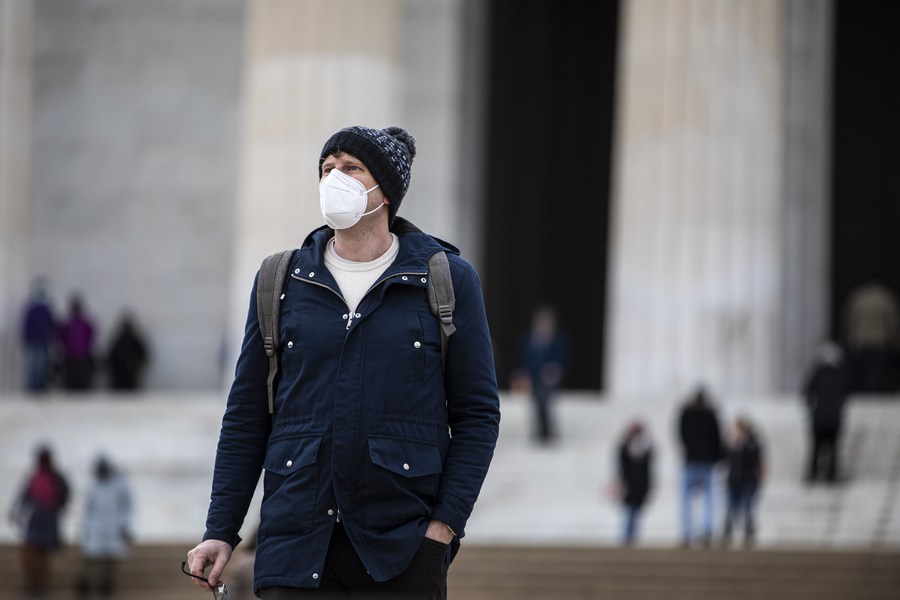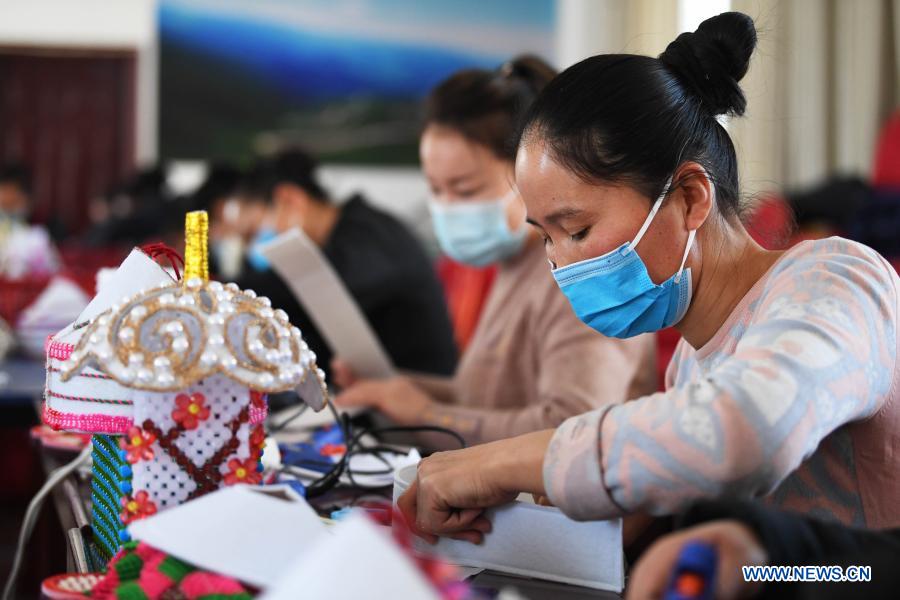
A man wearing a face mask visits the Lincoln Memorial in Washington, D.C., the United States, Jan. 24, 2021. (Photo by Aaron Schwartz/Xinhua)
A COVID-19 model estimates the B.1.351 variant first detected in South Africa and identified in the United States this week could drive the country's COVID-19 death toll up to 654,000 by May 1 in a worst-case scenario if mobility returns to pre-pandemic levels.
WASHINGTON, Jan. 30 (Xinhua) -- An influential COVID-19 model has predicted a possible "spring spike" in coronavirus deaths in the United States if emerging variants rapidly spread and people let down their guard against the virus.
In its latest forecast, the University of Washington's Institute for Health Metrics and Evaluation (IHME) estimates the B.1.351 variant first detected in South Africa and identified in the United States this week could drive the country's COVID-19 death toll up to 654,000 by May 1 in a worst-case scenario if mobility returns to pre-pandemic levels.
A resurgence of the virus could also occur in the spring in California and Florida, according to the forecast.
Keeping mobility low and maintaining social distancing could reduce that number by approximately 30,000, said the forecast.
"What we're seeing is sobering, and will require us to continue taking this pandemic very seriously," said Christopher Murray, director of IHME.
"Getting vaccines out quickly is essential, and masks are still one of the best tools we have to keep transmission low and avoid the worst possible outcome. People will need to continue taking precautions even once they are vaccinated, because of the potential for more contagious variants to spread," he said.
"We have not been seeing governments taking action to apply cautionary measures as quickly as expected, and have incorporated that information into the modeling," said Murray. "Without measures to control the spread of the disease, mobility remains higher and transmission is more likely."













